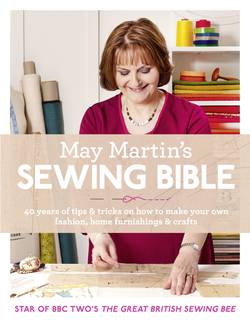Читать книгу May Martin’s Sewing Bible: 40 years of tips and tricks - May Martin - Страница 27
Types of interfacing
ОглавлениеThere are three main types of interfacing:
Non-woven: This type is made from bonded fibres and has a felt-like appearance. It has no grain line and can be cut out in any direction.
Woven: This has a grain line and needs to be cut out with the grain going in exactly the same direction as the garment piece to which it will be attached,. The garment will hang better as a result
Knitted: This type of interfacing has a knitted structure that enables it to stretch with the garment.
All of the above types can be purchased in sew-in and fusible (iron-on) forms:
Sew-in: This is good to use on fabric with a pile or a texture that may not be able to cope with the hot iron required to melt the glue on fusible interfacing. It needs to be cut out and tacked onto the wrong side of the piece that it is supporting. It is caught into the seams during construction.
Fusible: Fusible interfacing is very convenient, as you effectively ‘glue’ it on to the parts of the garment that need reinforcement without needing to tack it in place. Here are some basic instructions for applying it:
1. Cut out the interfacing using the pattern piece of the shape to be stiffened.
2. Trim most of the seam allowance from the edge of the piece. This will reduce bulk during construction.
3. Place the garment piece with the wrong side facing you. Position the piece of interfacing glue side down on top of the fabric.
4. Press into position. Lift the iron up and down, working from the centre of the interfacing outwards. It will take a few seconds in each place for the glue to melt.
